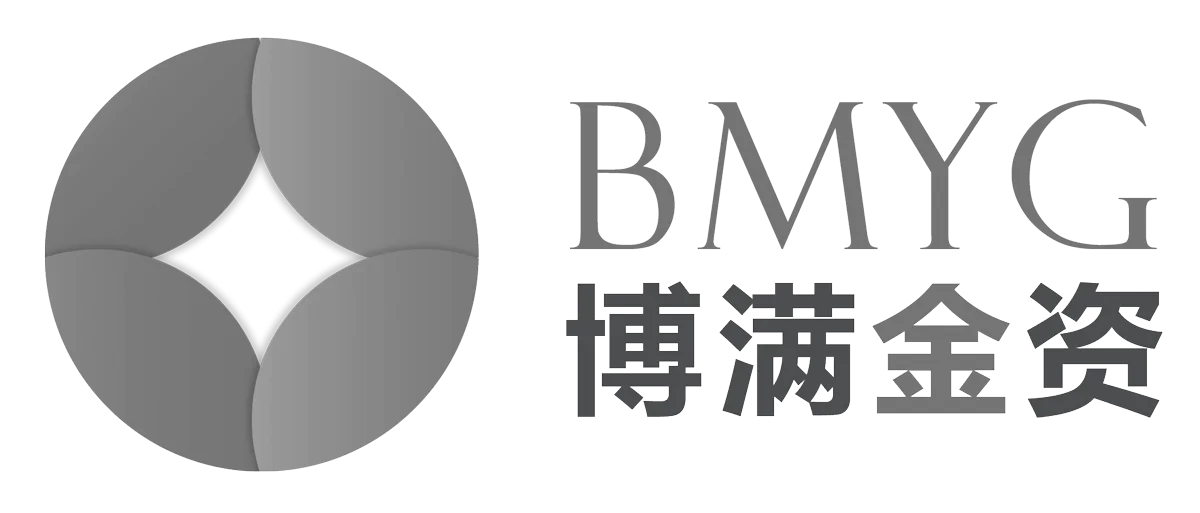News and Announcements

First Graphene (ASX: FGR) expect to achieve cash flow breakeven levels by the end of 2019
- Published March 18, 2019 12:00AM UTC
- Publisher Wholesale Investor
- Categories Company Updates
Highlights
- NICNAS registration expected by May 2019, enabling deliveries of PureGRAPH™ into existing sales agreements.
- Very significant improvements in performance of industrial composite (fibreglass) products in terms of strength, weight, flexibility and reduced water permeability with the addition of PureGRAPH™, resulting in compelling economics.
- Focusing on high volume, high-profit-margin markets for PureGRAPH™ with fast product adoption cycles and shorter
regulatory requirements. - Expect to achieve cash flow breakeven levels by the end of 2019, with strong growth in sales volumes thereafter.
- Continuing to work with a number of longer-term product verticals, all of which offer significant performance improvements over existing technologies and materials e.g. FireStop™ and concrete additives.
Advanced materials company, First Graphene Limited (“FGR” or “the Company”) (ASX: FGR) is currently undertaking a series of presentations to investors in Hong Kong, London and New York as well as participating in the Vertical Events Techknow Invest Roadshow. The intention is to better communicate the significant advances achieved by the Company in the
last few months, to shareholders and the investment community.
The Company is aware that not every shareholder is in a position to attend these presentations and investor briefings. Nevertheless, they should not be deprived of the knowledge and the perspectives being enunciated in these events. Therefore, we have prepared this ASX release, in conjunction with the previous ASX-released presentation, to keep shareholders fully informed of the Company’s progress.
Regulatory Preconditions to the Selling of Graphene
As previously advised, various jurisdictions around the globe require graphene materials to be registered with government agencies before they can legally be sold. This once-off registration process is required due to graphene being a newly developed substance.
On the 22nd January 2019, FGR advised it had secured REACH (Registration, Evaluation, Authorisation and Restriction of Chemicals) approval, relevant to the UK and Europe markets, to be able to legally sell up to 10 tonnes p.a. of graphene materials. The equivalent Australian process involves registration of PureGRAPH™ with The National Industrial Chemical Notification and Assessment Scheme (NICNAS). The application for this approval was lodged on 11th February 2019. Based on the NICNAS guidelines which state this registration process could take between 28 and 90 days, the Company expects it will be free to commence sales in May 2019.
In the meantime, the Henderson production facility is continuing to process and stockpile quantities of PureGRAPH™ for delivery to a number of customers as soon as NICNAS registration has been completed. Finalisation of sales agreements is simultaneously progressing.
Industry-based Preconditions to Commercialisation
Graphene has been touted by many scientists and companies as an amazing new nanomaterial that will impact positively upon many materials, as an additive, to greatly improve the performance characteristics of the material to which it is added. While, the path to commercialisation has been slower than some optimists had expected, in the context of new and disruptive technologies, the time frame has not been unusual.
The greatest obstacles to faster commercialisation have been the development of high-quality, high-performing products in the first instance, and then the availability of a reliable supply. No manufacturer will consider adopting graphene-based technology if it is not confident it can receive reliable supply. That is just common sense.
First Graphene recognised these obstacles and has addressed them head-on. It has gone beyond the relatively simple process of manufacturing graphene with its production methodology, spending considerable time and effort with designing and installing finishing steps to ensure the consistent quality of its product. This culminated in the launching of the PureGRAPH™ product range late in 2018, with supporting technical data. When customers buy PureGRAPH™ they will know with certainty what they are getting.
The Henderson facility is believed to be the largest bulk high-quality graphene production plant in the world (taking into account the quality and consistency of the end product). At maximum capacity, it could be producing 100 tpa of PureGRAPH™. Thus, it is truly a commercial scale facility. Its modular design allows for rapid duplication of capacity, either
at Henderson or other strategic locations around the globe, in timely response to growing sales books.
First Graphene has accumulated a stockpile of the high-grade vein graphite that provides an important cost and quality advantage to the Company. Stockpiles are now sufficient for 3-4 years of operation at a rate of 100 tpa, giving customers confidence in the availability of forward supplies of graphene. The offtake agreement with the Kahatagaha mine is sufficient to feed the production capacity of the plant at present, but First Graphene expects that it will be expanding the capacity as the
graphene growth curve kicks in. This is where the 100% owned mines in Sri Lanka come into play in securing future raw material supply. The two developed mines have the potential to supply up to a further 200 tpa of graphite.
Graphene Sales and Product Verticals
Currently there is no well-defined end market for the sale of graphene materials. Therefore, it is necessary for the Company to engage directly with potential customers. The growth of the sales book will be achieved by direct interface with industry. The time line from introduction to industrial scale sales will usually be in the order of 4-6 months depending upon how innovative the application is, the clients business model and the ease of adoption for the introduction of PureGRAPH™ into their production process. Further, the need to comply with industry or government standards could have a significant effect on timing. The simplest product verticals will be in industrial markets with low barriers to entry and shorter qualification times. Accepting that applications involving public safety, aircraft, mass transport or construction will take longer to approve.
While graphene is expected to play an important role in long term challenges such as novel energy storage devices, First Graphene recognises that these technologies require further development and testing to progress. Energy storage is, therefore, a central theme of our research programme within the GEIC, Manchester.
In the shorter term, First Graphene is very focused upon rapidly growing graphene sales and has identified there is significantly greater potential here and now for bulk product sales to the fibre composite and polymer markets. These require little regulatory approval. PureGRAPH™ 20 has been shown to work very well in these products with dramatic effect in many cases. The economics for including PureGRAPH™ are compelling as the examples below suggest.
- Industrial composites (fibreglass)
- Testing with one customer (who is just waiting for NICNAS registration), has provided the following improvements with the addition of just 1% PureGRAPH 20 (by weight):
- 30% reduction in production costs;
- 30% reduction in weight for the same strength;
- 20% increase in plant capacity due to faster production
cycles; and - significantly reduced water permeability.
- These improvements suggest that PureGRAPH™ could be the most important development in the manufacturing of fibreglass products in more than 40 years, raising the possibility of glass fibre competing with carbon fibre composites in some industrial sectors.
- The industrial composite market is forecast to reach US$130bn p.a. by 2024 by growing at 7-8% p.ai. Fibreglass accounts for 64% of this market. Other product verticals may include marine, sports & leisure, roofing and wind turbine blades.
- Testing with one customer (who is just waiting for NICNAS registration), has provided the following improvements with the addition of just 1% PureGRAPH 20 (by weight):
- Polyurethane liners for mining equipment
- FGR has already received a purchase order of 2,000 kg of PureGRAPH™ 20 for use in sacrificial wear liners for process plant chutes, bucket wheel reclaimers and pipeline spooling.
- Test work has shown 100-500% improvement in abrasion resistance than existing products in the market, as well as 30-40% improvement in tensile strength.
- First Graphene’s customer newGen is supplying liners enhanced with PureGRAPH™ to leading mining companies
that include BHP, Fortescue and RIO in the first instance. - The benefit for mining companies will come from longer life liners, meaning less frequent maintenance shutdowns i.e. less downtime and better efficiency of capital. The exact improvements will become apparent over the next 12 months of use in the field.
- The mining wear-lining market is estimated to be worth US$1.2bn p.a. by 2022ii, with equipment such as ball mills and conveyor belts being obvious candidates for enhancement with the addition of PureGRAPH™.
- Safety Boots
- FGR has announced an agreement to provide PureGRAPH™ to the boot manufacturer, Steel Blue, that is
expected to start purchasing product in Q4 of 2019. - Adding 1% PureGRAPH™ will provide added strength and flexibility to the soles, giving safer and longer life to the
boots. Additionally, it is expected that steel caps can be replaced with PureGRAPH™ enhanced glass composite
caps. Overall the weight of the boots may be reduced by 10%.
- FGR has announced an agreement to provide PureGRAPH™ to the boot manufacturer, Steel Blue, that is
At some point during 2019, the Company anticipates it will be selling approximately 18-20 tpa into these product verticals. Based on financial analysis carried out by Company personnel, it is believed this level of production will enable cashflow breakeven status to be achieved by December 2019.
It is highly encouraging that this milestone could be achieved with sales to Western Australian based companies alone. Given the size of the UK and European markets for similar products and considering the marketing efforts already underway in those regions, it would not be unreasonable to expect total orders for this region to exceed 200 tonnes in a relatively
short time frame – perhaps two or three years.
There continues to be great potential for PureGRAPH™ sales for the manufacturing of FireStop™ and to concrete manufacturers, but regulatory approval processes will take longer.
Scale of Operations and Growth Potential
The existing 100 tpa plant at Henderson is just the beginning. Market research undertaken by the Company suggests it could be fully utilised within the next 12-24 months, particularly if UK sales live up to expectations.
It is a significant benefit of our modular proprietary production process that the Company’s capacity can be expanded at relatively short notice in response to sales orders. This minimises capital and dilution risk for shareholders. It also means additional plants can be constructed in locations closer to markets, for added efficiencies.
Looking further into the future, it is not unreasonable to be aiming for production levels in the range of 500-1,000 tpa, which would result in significant earnings being achieved to the benefit of shareholders. First Graphene is determined to build on its first-mover advantage to secure its position as the world’s leading graphene producer.
About First Graphene (ASX: FGR)
First Graphene Ltd. is the leading supplier of high-quality, bulk graphene products. The Company has a robust manufacturing platform based upon captive supply of high-purity raw materials and an established 100 tonnes/year graphene production capacity. Commercial applications are now being progressed in industrial composites & rubbers, fire retardancy, construction and energy storage.
First Graphene Ltd. is publicly listed in Australia (ASX: FGR) and has a primary manufacturing base in Henderson, near Perth, WA. The Company was recently incorporated in the UK as First Graphene (UK) Ltd. and is a Tier 1 partner at the Graphene Engineering and Innovation Centre (GEIC), Manchester, UK.
Company Updates
Backed By Leading Investment Groups and Family Offices







